JORGE EIELSON: ABOUT SHAMANS, PHILOSOPHIES AND NARRATIVES
EIELSON quipucamayoc is Jorge Eielson's exhibition at Travesía Cuatro gallery.

The term shaman comes from the Tungus languages (Siberia) and means "he who knows". A shaman is thus a figure who makes predictions, healing practices, invocation to the gods and who, having a special connection with nature, is usually a good advisor on behavior, and therefore has the ability to modify reality or the perception of it. In the specific case of American cultures, shamans have been active members of the community since pre-Hispanic times, focusing mainly on rituals for the harvest and good weather omens.
With a restless and profound nature, Eielson explored his intellectual gifts by nourishing himself with universal literature, European philosophy, as well as the scientific paradigms of the nineteenth and twentieth centuries. At the same time, he opened a space of spiritual search within Zen Buddhism. This multiple perspective made him become aware of the world and reality from his own experience as an exile and nomad; but this is only a small expression of his versatility, since he found in poetry and art the last redoubt of an almost extinct humanism, of a humanism that could be practiced in the margins of modern exhibitionism. Thus, poetry was not a simple linguistic exercise or artistic creation, but, in a more complex way, a place of political resistance. Poetry was for Eielson the last redoubt from which one could be a legitimate shaman.
-
Jorge Eielson, EIELSON quipucamayoc, vista general. Travesía Cuatro Madrid, España.
-
Jorge Eielson, EIELSON quipucamayoc, vista general. Travesía Cuatro Madrid, España.
-
Jorge Eielson, EIELSON quipucamayoc, vista general. Travesía Cuatro Madrid, España.
-
Jorge Eielson, Untitled, n.d.
-
Jorge Eielson, EIELSON quipucamayoc, vista general. Travesía Cuatro Madrid, España.
-
Jorge Eielson, EIELSON quipucamayoc, vista general. Travesía Cuatro Madrid, España.
-
Jorge Eielson, EIELSON quipucamayoc, vista general. Travesía Cuatro Madrid, España.
-
Jorge Eielson, EIELSON quipucamayoc, vista general. Travesía Cuatro Madrid, España.
-
Jorge Eielson, EIELSON quipucamayoc, vista general. Travesía Cuatro Madrid, España.
-
Jorge Eielson, Nodo, 2001.
In the ancient civilizations of Peru, the quipucamayoc were the mathematicians-accountants who kept the population registers and controlled the harvests, but they were also responsible for recording narratives and myths. Therefore, they had the authority to handle information on administrative and narrative matters. The high title granted to these " experts" gave them the role of visionaries, authorized them to handle population and harvest data and, fundamentally, made them qualified hermeneuts to interpret the cosmos.
Eielson quipucamayoc covers important moments of this cultured man who recovers the role of the Latin American shaman, of this man who covers fundamental moments of Peru's visual culture, of this man who reactivates the production of the South American quipu, of this man who opens a moral perspective to renew the world. It would seem that only a decentralized position –life outside his country of origin– could give him the objectivity to speak with authority about Peru. Jorge Eduardo Eielson is one of the most critical poets and artists of his country and one of the figures who most reproves consumer societies. However, Eielson is not only a critic, but also a healer who reestablishes the order of the cosmos through the containment and release of energy concentrated in a knot.
–Patrick Charpenel.
EIELSON quipucamayoc. Solo exhibition by Jorge Eielson.
Until April 27, 2024.
Travesía Cuatro. Calle de San Mateo 16, 28004 Madrid, Spain.
May interest you

The Elba Benítez gallery presented Carlos Garaicoa's exhibition, entitled π=3,1416. The show is made up of a body of unpublished works born from the artist's desire to delve into the pictorial tradition of Latin American geometric abstraction, this time on wood.

The Elba Benítez gallery presented Carlos Garaicoa's exhibition, entitled π=3,1416. The show is made up of a body of unpublished works born from the artist's desire to delve into the pictorial tradition of Latin American geometric abstraction, this time on wood.

Quiebramales commemorates the twentieth anniversary of the conception of the David Quiebramales project. The exhibition at La Cometa gallery revisits the biopolitics that traverse the bodies affected by war, the structures that build (and destroy) a society, and education as a path to social justice.

Museu de Arte de São Paulo Assis Chateaubriand (MASP) presents, from March 22 to July 28, 2024, the exhibition Francis Bacon: The Beauty of Meat. Curated by Adriano Pedrosa, Laura Cosendey, and Isabela Ferreira Loures, the exhibition aims to highlight how the artist, with his innovative and impactful painting, paved the way for a queer presence in visual culture.
THE MONOGRAPHIC EXHIBITION BY BRITISH ARTIST FRANCIS BACON AT MASP
Museu de Arte de São Paulo Assis Chateaubriand (MASP) presents, from March 22 to July 28, 2024, the exhibition Francis Bacon: The Beauty of Meat. Curated by Adriano Pedrosa, Laura Cosendey, and Isabela Ferreira Loures, the exhibition aims to highlight how the artist, with his innovative and impactful painting, paved the way for a queer presence in visual culture.

On April 6, the emblematic auction of the Museo de Arte de Lima - MALI returns in its XXXI edition at Casa Prado. The event will feature more than 60 pieces of art divided into micro sessions that mark a journey from historical to contemporary.
A NEW EDITION OF THE MALI AUCTION TO CELEBRATE PERUVIAN ART
On April 6, the emblematic auction of the Museo de Arte de Lima - MALI returns in its XXXI edition at Casa Prado. The event will feature more than 60 pieces of art divided into micro sessions that mark a journey from historical to contemporary.
The exhibition volcanic asterisk fruit avatar by the collective assume vivid astro focus (avaf) at Marlborough features Peruvian alpaca wool tapestries, anodized aluminum curtains, and acrylic paintings on double sheets of corrugated kraft paper.

The exhibition Teresa Solar Abbourd. Pájaro sueño de máquina (Bird dream of machine) in CA2M Museum presents two large installations that condense the artist's research in recent years. It is curated by Tania Pardo and Claudia Segura Campins.
RESISTANCE AND EMPTINESS: TERESA SOLAR ABBOUD AT CA2M
The exhibition Teresa Solar Abbourd. Pájaro sueño de máquina (Bird dream of machine) in CA2M Museum presents two large installations that condense the artist's research in recent years. It is curated by Tania Pardo and Claudia Segura Campins.
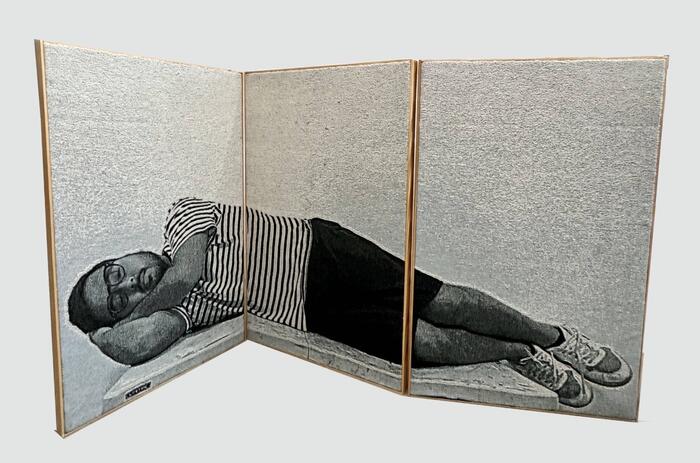
Ways of disappearing is the solo exhibition of Peruvian artist Gonzalo Hernández at the Instituto Cultural Peruano Norteamericano (ICPNA). It is curated by Max Hernández Calvo.
ABOUT FAILURE AND SUCCESS: GONZALO HERNANDEZ AT ICPNA
Ways of disappearing is the solo exhibition of Peruvian artist Gonzalo Hernández at the Instituto Cultural Peruano Norteamericano (ICPNA). It is curated by Max Hernández Calvo.

The Museo de Arte de Lima - MALI presents Francis Alÿs. When faith moves mountains (2002). Two decades later. This exhibition will immerse visitors in the extraordinary work of the renowned Belgian artist, Francis Alÿs, exploring a momentous milestone that took place in Peru on April 11, 2002.
AN ONGOING PROJECT 20 YEARS LATER: FRANCIS ALŸS IN MALI
The Museo de Arte de Lima - MALI presents Francis Alÿs. When faith moves mountains (2002). Two decades later. This exhibition will immerse visitors in the extraordinary work of the renowned Belgian artist, Francis Alÿs, exploring a momentous milestone that took place in Peru on April 11, 2002.
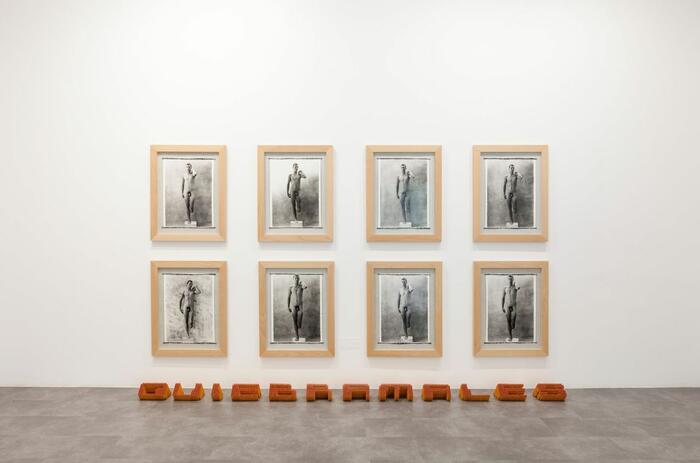
Two decades after Miguel Ángel Rojas (1946, Bogotá, Colombia) conceptualized in his project David Quiebramales his denunciation of violence and the use of education as the most efficient vehicle towards a catharsis for those who suffer it, the Madrid headquarters of La Cometa revisits his most emblematic work and reinterprets it as the framework for a kind of thematic retrospective. This commemoration of that first David Quiebramales reinforces a view that is still difficult to overcome and that, even today, serves to trace those harmful social dynamics that are created between society and war, the institutional and the political systems.
TOWARDS MIGUEL ÁNGEL ROJAS' QUIEBRAMALES
Two decades after Miguel Ángel Rojas (1946, Bogotá, Colombia) conceptualized in his project David Quiebramales his denunciation of violence and the use of education as the most efficient vehicle towards a catharsis for those who suffer it, the Madrid headquarters of La Cometa revisits his most emblematic work and reinterprets it as the framework for a kind of thematic retrospective. This commemoration of that first David Quiebramales reinforces a view that is still difficult to overcome and that, even today, serves to trace those harmful social dynamics that are created between society and war, the institutional and the political systems.
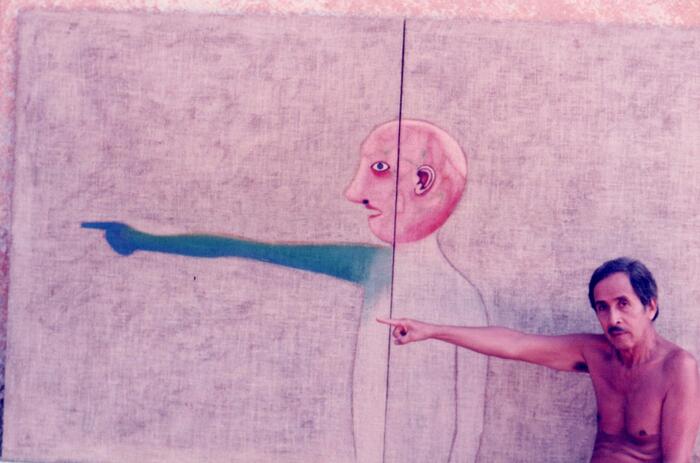
The Pontificia Universidad Católica (PUCP) launches the Eielson 100 festival, a week of celebration that concentrates a series of events, whose central date runs from April 8 to 15.
EIELSON 100: THE FESTIVAL THAT CELEBRATES ARTIST JORGE EIELSON IN PERU
The Pontificia Universidad Católica (PUCP) launches the Eielson 100 festival, a week of celebration that concentrates a series of events, whose central date runs from April 8 to 15.
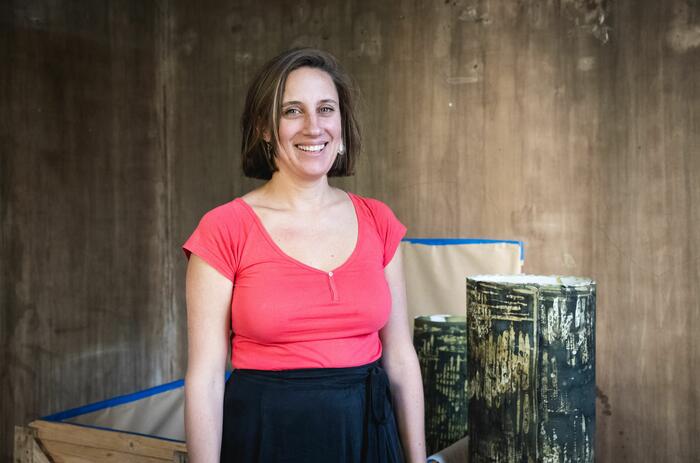
Lucila Gradin begins her work when creating her own natural dyes –through dyeing and medicinal plants from all over the world– and culminates it by pursuing the image that leaves every trace of this ancestral practice through embroidery, textiles and compositions on paper. The Argentine artist is part of the RADAR section of Pinta PArC 2024, together with COTT Gallery.
LUCILA GRADIN: A JOURNEY THROUGH COLOR
Lucila Gradin begins her work when creating her own natural dyes –through dyeing and medicinal plants from all over the world– and culminates it by pursuing the image that leaves every trace of this ancestral practice through embroidery, textiles and compositions on paper. The Argentine artist is part of the RADAR section of Pinta PArC 2024, together with COTT Gallery.
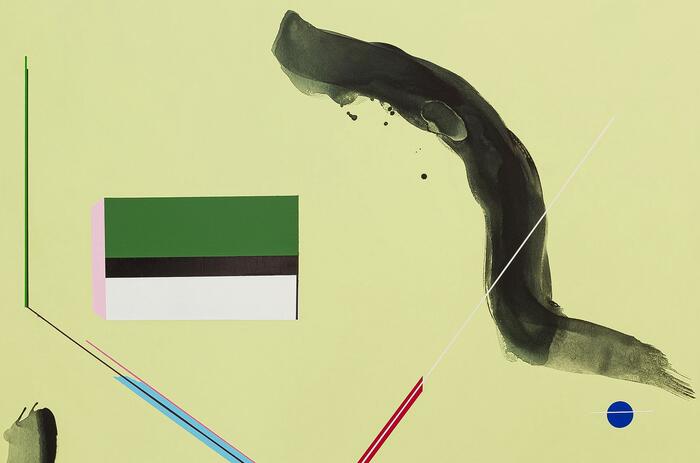
The geometry in Jorge Cabieses' (Lima, Peru, 1971) usual outline is broken with the action of the spontaneity of the curved and almost organic stroke in his second solo exhibition in the Spanish capital. The Lima-born artist thus proposes, in a certain way, a dialogue between the artificial of the synthetic and the atavistic through the incorporation of those more spontaneous brushstrokes over the usual framework of rectitude that the artist usually presents.
CABIESES’ INTERCEPTED IMAGE
The geometry in Jorge Cabieses' (Lima, Peru, 1971) usual outline is broken with the action of the spontaneity of the curved and almost organic stroke in his second solo exhibition in the Spanish capital. The Lima-born artist thus proposes, in a certain way, a dialogue between the artificial of the synthetic and the atavistic through the incorporation of those more spontaneous brushstrokes over the usual framework of rectitude that the artist usually presents.
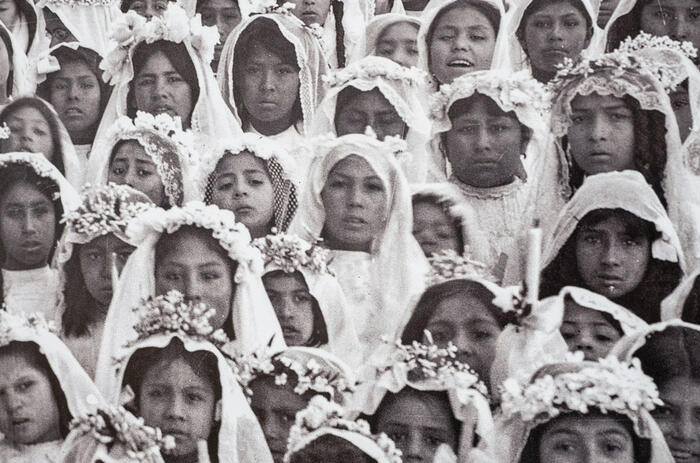
Casa de América inaugurated two exhibitions of Peruvian art: Memoria del Perú. Photographs 1890-1950, with works by various photographers that capture a significant period in the country's history, and Shipibo-Konibo. Portraits of my blood, with photographs by artist David Diaz on the life of the Shipibo-Konibo.
TWO EXHIBITIONS OF PERUVIAN PHOTOGRAPHY AT CASA DE AMERICA
Casa de América inaugurated two exhibitions of Peruvian art: Memoria del Perú. Photographs 1890-1950, with works by various photographers that capture a significant period in the country's history, and Shipibo-Konibo. Portraits of my blood, with photographs by artist David Diaz on the life of the Shipibo-Konibo.
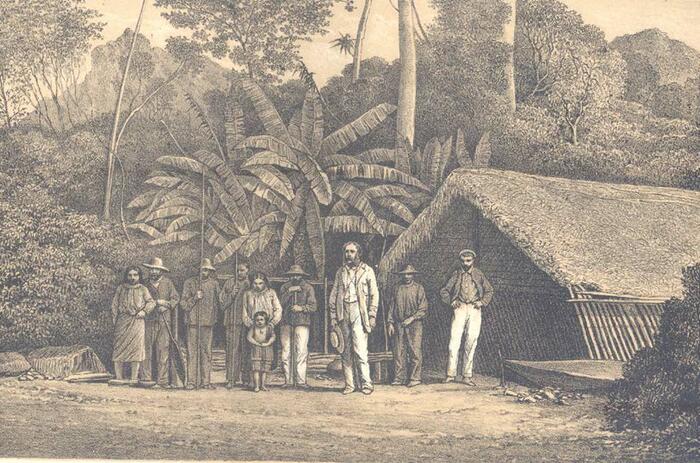
Museo del grabado ICPNA presents Antonio Raimondi and the official representation of nature in republican Peru, curated by Luis Felipe Villacorta.
ANTONIO RAIMONDI AND THE REPRESENTATION OF NATURE IN PERU
Museo del grabado ICPNA presents Antonio Raimondi and the official representation of nature in republican Peru, curated by Luis Felipe Villacorta.
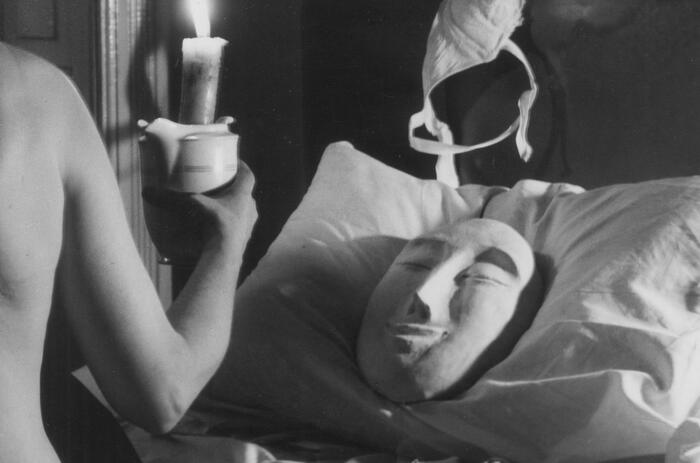
Latin American surrealist photography will have a predominant place in the 4th edition of the Castilla y León International Photography Festival, to be held from April 17 in Palencia, Spain.
SURREALISM IN LATIN AMERICA AT 4TH FIFCYL
Latin American surrealist photography will have a predominant place in the 4th edition of the Castilla y León International Photography Festival, to be held from April 17 in Palencia, Spain.

Mariella Agois. Geometric Systems. Paintings 2008-2023 is the first anthological exhibition of the Peruvian artist's geometric painting at the Museo de Arte de Lima (MALI). It is curated by Jorge Villacorta and Paulo Dam.
THE GEOMETRICAL SYSTEMS OF MARIELLA AGOIS IN THE MALI
Mariella Agois. Geometric Systems. Paintings 2008-2023 is the first anthological exhibition of the Peruvian artist's geometric painting at the Museo de Arte de Lima (MALI). It is curated by Jorge Villacorta and Paulo Dam.

The vindication of the Peruvian Jorge Eduardo Eielson (Lima, Peru, 1924) looks fundamental, far beyond any framed motivation in the round figures of the anniversaries. However, the work being done around the centenary of his birth shows a titanic effort to explore one of the most versatile artists in the plastic arts and, perhaps in his best-known aspect, in the literature of contemporary Peru.
JORGE EIELSON, THE LAST QUIPUCAMAYOC
The vindication of the Peruvian Jorge Eduardo Eielson (Lima, Peru, 1924) looks fundamental, far beyond any framed motivation in the round figures of the anniversaries. However, the work being done around the centenary of his birth shows a titanic effort to explore one of the most versatile artists in the plastic arts and, perhaps in his best-known aspect, in the literature of contemporary Peru.

Flavio Garciandía (Caibarién, Cuba, 1954) becomes the active and passive subject of his work in his first solo exhibition in Madrid.
FLAVIO GARCIANDÍA’S SELF-REVISIONISM
Flavio Garciandía (Caibarién, Cuba, 1954) becomes the active and passive subject of his work in his first solo exhibition in Madrid.

Valencian gallery Jorge Lopez is programming a solo exhibition by artist Claudia Joskowizc (Santa Cruz de la Sierra, Bolivia, 1968) that brings together the audiovisual and performative techniques with which the Bolivian artist builds the narrative and chronology of her native country.
CLAUDIA JOSKOWIZC, SOLO EXHBITION AT VALENCIA
Valencian gallery Jorge Lopez is programming a solo exhibition by artist Claudia Joskowizc (Santa Cruz de la Sierra, Bolivia, 1968) that brings together the audiovisual and performative techniques with which the Bolivian artist builds the narrative and chronology of her native country.
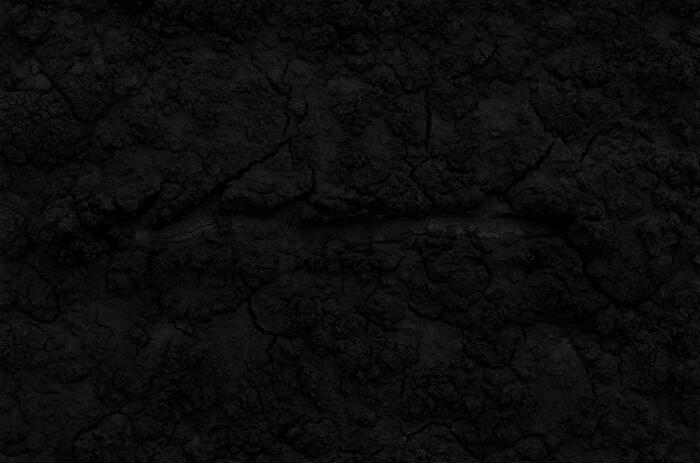
Bosco Sodi (Mexico, 1970) explores deeply in El día que nos volvimos a encontrar a universe quite distant from his recognizable large format and liveliness production to delve into the pleasures of the search for new material expressions and the abandonment of the chromatic in favour of texture, the depth of the absence of colour and concept.
BOSCO SODI AND THE VOLUME OF DARKNESS
Bosco Sodi (Mexico, 1970) explores deeply in El día que nos volvimos a encontrar a universe quite distant from his recognizable large format and liveliness production to delve into the pleasures of the search for new material expressions and the abandonment of the chromatic in favour of texture, the depth of the absence of colour and concept.

The Elba Benítez gallery presented Carlos Garaicoa's exhibition, entitled π=3,1416. The show is made up of a body of unpublished works born from the artist's desire to delve into the pictorial tradition of Latin American geometric abstraction, this time on wood.

Quiebramales commemorates the twentieth anniversary of the conception of the David Quiebramales project. The exhibition at La Cometa gallery revisits the biopolitics that traverse the bodies affected by war, the structures that build (and destroy) a society, and education as a path to social justice.

Museu de Arte de São Paulo Assis Chateaubriand (MASP) presents, from March 22 to July 28, 2024, the exhibition Francis Bacon: The Beauty of Meat. Curated by Adriano Pedrosa, Laura Cosendey, and Isabela Ferreira Loures, the exhibition aims to highlight how the artist, with his innovative and impactful painting, paved the way for a queer presence in visual culture.
THE MONOGRAPHIC EXHIBITION BY BRITISH ARTIST FRANCIS BACON AT MASP
Museu de Arte de São Paulo Assis Chateaubriand (MASP) presents, from March 22 to July 28, 2024, the exhibition Francis Bacon: The Beauty of Meat. Curated by Adriano Pedrosa, Laura Cosendey, and Isabela Ferreira Loures, the exhibition aims to highlight how the artist, with his innovative and impactful painting, paved the way for a queer presence in visual culture.

On April 6, the emblematic auction of the Museo de Arte de Lima - MALI returns in its XXXI edition at Casa Prado. The event will feature more than 60 pieces of art divided into micro sessions that mark a journey from historical to contemporary.
A NEW EDITION OF THE MALI AUCTION TO CELEBRATE PERUVIAN ART
On April 6, the emblematic auction of the Museo de Arte de Lima - MALI returns in its XXXI edition at Casa Prado. The event will feature more than 60 pieces of art divided into micro sessions that mark a journey from historical to contemporary.
The exhibition volcanic asterisk fruit avatar by the collective assume vivid astro focus (avaf) at Marlborough features Peruvian alpaca wool tapestries, anodized aluminum curtains, and acrylic paintings on double sheets of corrugated kraft paper.

The exhibition Teresa Solar Abbourd. Pájaro sueño de máquina (Bird dream of machine) in CA2M Museum presents two large installations that condense the artist's research in recent years. It is curated by Tania Pardo and Claudia Segura Campins.
RESISTANCE AND EMPTINESS: TERESA SOLAR ABBOUD AT CA2M
The exhibition Teresa Solar Abbourd. Pájaro sueño de máquina (Bird dream of machine) in CA2M Museum presents two large installations that condense the artist's research in recent years. It is curated by Tania Pardo and Claudia Segura Campins.

Ways of disappearing is the solo exhibition of Peruvian artist Gonzalo Hernández at the Instituto Cultural Peruano Norteamericano (ICPNA). It is curated by Max Hernández Calvo.
ABOUT FAILURE AND SUCCESS: GONZALO HERNANDEZ AT ICPNA
Ways of disappearing is the solo exhibition of Peruvian artist Gonzalo Hernández at the Instituto Cultural Peruano Norteamericano (ICPNA). It is curated by Max Hernández Calvo.

The Museo de Arte de Lima - MALI presents Francis Alÿs. When faith moves mountains (2002). Two decades later. This exhibition will immerse visitors in the extraordinary work of the renowned Belgian artist, Francis Alÿs, exploring a momentous milestone that took place in Peru on April 11, 2002.
AN ONGOING PROJECT 20 YEARS LATER: FRANCIS ALŸS IN MALI
The Museo de Arte de Lima - MALI presents Francis Alÿs. When faith moves mountains (2002). Two decades later. This exhibition will immerse visitors in the extraordinary work of the renowned Belgian artist, Francis Alÿs, exploring a momentous milestone that took place in Peru on April 11, 2002.

Two decades after Miguel Ángel Rojas (1946, Bogotá, Colombia) conceptualized in his project David Quiebramales his denunciation of violence and the use of education as the most efficient vehicle towards a catharsis for those who suffer it, the Madrid headquarters of La Cometa revisits his most emblematic work and reinterprets it as the framework for a kind of thematic retrospective. This commemoration of that first David Quiebramales reinforces a view that is still difficult to overcome and that, even today, serves to trace those harmful social dynamics that are created between society and war, the institutional and the political systems.
TOWARDS MIGUEL ÁNGEL ROJAS' QUIEBRAMALES
Two decades after Miguel Ángel Rojas (1946, Bogotá, Colombia) conceptualized in his project David Quiebramales his denunciation of violence and the use of education as the most efficient vehicle towards a catharsis for those who suffer it, the Madrid headquarters of La Cometa revisits his most emblematic work and reinterprets it as the framework for a kind of thematic retrospective. This commemoration of that first David Quiebramales reinforces a view that is still difficult to overcome and that, even today, serves to trace those harmful social dynamics that are created between society and war, the institutional and the political systems.

The Pontificia Universidad Católica (PUCP) launches the Eielson 100 festival, a week of celebration that concentrates a series of events, whose central date runs from April 8 to 15.
EIELSON 100: THE FESTIVAL THAT CELEBRATES ARTIST JORGE EIELSON IN PERU
The Pontificia Universidad Católica (PUCP) launches the Eielson 100 festival, a week of celebration that concentrates a series of events, whose central date runs from April 8 to 15.

Lucila Gradin begins her work when creating her own natural dyes –through dyeing and medicinal plants from all over the world– and culminates it by pursuing the image that leaves every trace of this ancestral practice through embroidery, textiles and compositions on paper. The Argentine artist is part of the RADAR section of Pinta PArC 2024, together with COTT Gallery.
LUCILA GRADIN: A JOURNEY THROUGH COLOR
Lucila Gradin begins her work when creating her own natural dyes –through dyeing and medicinal plants from all over the world– and culminates it by pursuing the image that leaves every trace of this ancestral practice through embroidery, textiles and compositions on paper. The Argentine artist is part of the RADAR section of Pinta PArC 2024, together with COTT Gallery.

The geometry in Jorge Cabieses' (Lima, Peru, 1971) usual outline is broken with the action of the spontaneity of the curved and almost organic stroke in his second solo exhibition in the Spanish capital. The Lima-born artist thus proposes, in a certain way, a dialogue between the artificial of the synthetic and the atavistic through the incorporation of those more spontaneous brushstrokes over the usual framework of rectitude that the artist usually presents.
CABIESES’ INTERCEPTED IMAGE
The geometry in Jorge Cabieses' (Lima, Peru, 1971) usual outline is broken with the action of the spontaneity of the curved and almost organic stroke in his second solo exhibition in the Spanish capital. The Lima-born artist thus proposes, in a certain way, a dialogue between the artificial of the synthetic and the atavistic through the incorporation of those more spontaneous brushstrokes over the usual framework of rectitude that the artist usually presents.

Casa de América inaugurated two exhibitions of Peruvian art: Memoria del Perú. Photographs 1890-1950, with works by various photographers that capture a significant period in the country's history, and Shipibo-Konibo. Portraits of my blood, with photographs by artist David Diaz on the life of the Shipibo-Konibo.
TWO EXHIBITIONS OF PERUVIAN PHOTOGRAPHY AT CASA DE AMERICA
Casa de América inaugurated two exhibitions of Peruvian art: Memoria del Perú. Photographs 1890-1950, with works by various photographers that capture a significant period in the country's history, and Shipibo-Konibo. Portraits of my blood, with photographs by artist David Diaz on the life of the Shipibo-Konibo.

Museo del grabado ICPNA presents Antonio Raimondi and the official representation of nature in republican Peru, curated by Luis Felipe Villacorta.
ANTONIO RAIMONDI AND THE REPRESENTATION OF NATURE IN PERU
Museo del grabado ICPNA presents Antonio Raimondi and the official representation of nature in republican Peru, curated by Luis Felipe Villacorta.

Latin American surrealist photography will have a predominant place in the 4th edition of the Castilla y León International Photography Festival, to be held from April 17 in Palencia, Spain.
SURREALISM IN LATIN AMERICA AT 4TH FIFCYL
Latin American surrealist photography will have a predominant place in the 4th edition of the Castilla y León International Photography Festival, to be held from April 17 in Palencia, Spain.

Mariella Agois. Geometric Systems. Paintings 2008-2023 is the first anthological exhibition of the Peruvian artist's geometric painting at the Museo de Arte de Lima (MALI). It is curated by Jorge Villacorta and Paulo Dam.
THE GEOMETRICAL SYSTEMS OF MARIELLA AGOIS IN THE MALI
Mariella Agois. Geometric Systems. Paintings 2008-2023 is the first anthological exhibition of the Peruvian artist's geometric painting at the Museo de Arte de Lima (MALI). It is curated by Jorge Villacorta and Paulo Dam.

The vindication of the Peruvian Jorge Eduardo Eielson (Lima, Peru, 1924) looks fundamental, far beyond any framed motivation in the round figures of the anniversaries. However, the work being done around the centenary of his birth shows a titanic effort to explore one of the most versatile artists in the plastic arts and, perhaps in his best-known aspect, in the literature of contemporary Peru.
JORGE EIELSON, THE LAST QUIPUCAMAYOC
The vindication of the Peruvian Jorge Eduardo Eielson (Lima, Peru, 1924) looks fundamental, far beyond any framed motivation in the round figures of the anniversaries. However, the work being done around the centenary of his birth shows a titanic effort to explore one of the most versatile artists in the plastic arts and, perhaps in his best-known aspect, in the literature of contemporary Peru.

Flavio Garciandía (Caibarién, Cuba, 1954) becomes the active and passive subject of his work in his first solo exhibition in Madrid.
FLAVIO GARCIANDÍA’S SELF-REVISIONISM
Flavio Garciandía (Caibarién, Cuba, 1954) becomes the active and passive subject of his work in his first solo exhibition in Madrid.

Valencian gallery Jorge Lopez is programming a solo exhibition by artist Claudia Joskowizc (Santa Cruz de la Sierra, Bolivia, 1968) that brings together the audiovisual and performative techniques with which the Bolivian artist builds the narrative and chronology of her native country.
CLAUDIA JOSKOWIZC, SOLO EXHBITION AT VALENCIA
Valencian gallery Jorge Lopez is programming a solo exhibition by artist Claudia Joskowizc (Santa Cruz de la Sierra, Bolivia, 1968) that brings together the audiovisual and performative techniques with which the Bolivian artist builds the narrative and chronology of her native country.

Bosco Sodi (Mexico, 1970) explores deeply in El día que nos volvimos a encontrar a universe quite distant from his recognizable large format and liveliness production to delve into the pleasures of the search for new material expressions and the abandonment of the chromatic in favour of texture, the depth of the absence of colour and concept.
BOSCO SODI AND THE VOLUME OF DARKNESS
Bosco Sodi (Mexico, 1970) explores deeply in El día que nos volvimos a encontrar a universe quite distant from his recognizable large format and liveliness production to delve into the pleasures of the search for new material expressions and the abandonment of the chromatic in favour of texture, the depth of the absence of colour and concept.

The Elba Benítez gallery presented Carlos Garaicoa's exhibition, entitled π=3,1416. The show is made up of a body of unpublished works born from the artist's desire to delve into the pictorial tradition of Latin American geometric abstraction, this time on wood.

Quiebramales commemorates the twentieth anniversary of the conception of the David Quiebramales project. The exhibition at La Cometa gallery revisits the biopolitics that traverse the bodies affected by war, the structures that build (and destroy) a society, and education as a path to social justice.

Museu de Arte de São Paulo Assis Chateaubriand (MASP) presents, from March 22 to July 28, 2024, the exhibition Francis Bacon: The Beauty of Meat. Curated by Adriano Pedrosa, Laura Cosendey, and Isabela Ferreira Loures, the exhibition aims to highlight how the artist, with his innovative and impactful painting, paved the way for a queer presence in visual culture.
THE MONOGRAPHIC EXHIBITION BY BRITISH ARTIST FRANCIS BACON AT MASP
Museu de Arte de São Paulo Assis Chateaubriand (MASP) presents, from March 22 to July 28, 2024, the exhibition Francis Bacon: The Beauty of Meat. Curated by Adriano Pedrosa, Laura Cosendey, and Isabela Ferreira Loures, the exhibition aims to highlight how the artist, with his innovative and impactful painting, paved the way for a queer presence in visual culture.

On April 6, the emblematic auction of the Museo de Arte de Lima - MALI returns in its XXXI edition at Casa Prado. The event will feature more than 60 pieces of art divided into micro sessions that mark a journey from historical to contemporary.
A NEW EDITION OF THE MALI AUCTION TO CELEBRATE PERUVIAN ART
On April 6, the emblematic auction of the Museo de Arte de Lima - MALI returns in its XXXI edition at Casa Prado. The event will feature more than 60 pieces of art divided into micro sessions that mark a journey from historical to contemporary.
The exhibition volcanic asterisk fruit avatar by the collective assume vivid astro focus (avaf) at Marlborough features Peruvian alpaca wool tapestries, anodized aluminum curtains, and acrylic paintings on double sheets of corrugated kraft paper.

The exhibition Teresa Solar Abbourd. Pájaro sueño de máquina (Bird dream of machine) in CA2M Museum presents two large installations that condense the artist's research in recent years. It is curated by Tania Pardo and Claudia Segura Campins.
RESISTANCE AND EMPTINESS: TERESA SOLAR ABBOUD AT CA2M
The exhibition Teresa Solar Abbourd. Pájaro sueño de máquina (Bird dream of machine) in CA2M Museum presents two large installations that condense the artist's research in recent years. It is curated by Tania Pardo and Claudia Segura Campins.

Ways of disappearing is the solo exhibition of Peruvian artist Gonzalo Hernández at the Instituto Cultural Peruano Norteamericano (ICPNA). It is curated by Max Hernández Calvo.
ABOUT FAILURE AND SUCCESS: GONZALO HERNANDEZ AT ICPNA
Ways of disappearing is the solo exhibition of Peruvian artist Gonzalo Hernández at the Instituto Cultural Peruano Norteamericano (ICPNA). It is curated by Max Hernández Calvo.

The Museo de Arte de Lima - MALI presents Francis Alÿs. When faith moves mountains (2002). Two decades later. This exhibition will immerse visitors in the extraordinary work of the renowned Belgian artist, Francis Alÿs, exploring a momentous milestone that took place in Peru on April 11, 2002.
AN ONGOING PROJECT 20 YEARS LATER: FRANCIS ALŸS IN MALI
The Museo de Arte de Lima - MALI presents Francis Alÿs. When faith moves mountains (2002). Two decades later. This exhibition will immerse visitors in the extraordinary work of the renowned Belgian artist, Francis Alÿs, exploring a momentous milestone that took place in Peru on April 11, 2002.

Two decades after Miguel Ángel Rojas (1946, Bogotá, Colombia) conceptualized in his project David Quiebramales his denunciation of violence and the use of education as the most efficient vehicle towards a catharsis for those who suffer it, the Madrid headquarters of La Cometa revisits his most emblematic work and reinterprets it as the framework for a kind of thematic retrospective. This commemoration of that first David Quiebramales reinforces a view that is still difficult to overcome and that, even today, serves to trace those harmful social dynamics that are created between society and war, the institutional and the political systems.
TOWARDS MIGUEL ÁNGEL ROJAS' QUIEBRAMALES
Two decades after Miguel Ángel Rojas (1946, Bogotá, Colombia) conceptualized in his project David Quiebramales his denunciation of violence and the use of education as the most efficient vehicle towards a catharsis for those who suffer it, the Madrid headquarters of La Cometa revisits his most emblematic work and reinterprets it as the framework for a kind of thematic retrospective. This commemoration of that first David Quiebramales reinforces a view that is still difficult to overcome and that, even today, serves to trace those harmful social dynamics that are created between society and war, the institutional and the political systems.

The Pontificia Universidad Católica (PUCP) launches the Eielson 100 festival, a week of celebration that concentrates a series of events, whose central date runs from April 8 to 15.
EIELSON 100: THE FESTIVAL THAT CELEBRATES ARTIST JORGE EIELSON IN PERU
The Pontificia Universidad Católica (PUCP) launches the Eielson 100 festival, a week of celebration that concentrates a series of events, whose central date runs from April 8 to 15.

Lucila Gradin begins her work when creating her own natural dyes –through dyeing and medicinal plants from all over the world– and culminates it by pursuing the image that leaves every trace of this ancestral practice through embroidery, textiles and compositions on paper. The Argentine artist is part of the RADAR section of Pinta PArC 2024, together with COTT Gallery.
LUCILA GRADIN: A JOURNEY THROUGH COLOR
Lucila Gradin begins her work when creating her own natural dyes –through dyeing and medicinal plants from all over the world– and culminates it by pursuing the image that leaves every trace of this ancestral practice through embroidery, textiles and compositions on paper. The Argentine artist is part of the RADAR section of Pinta PArC 2024, together with COTT Gallery.

The geometry in Jorge Cabieses' (Lima, Peru, 1971) usual outline is broken with the action of the spontaneity of the curved and almost organic stroke in his second solo exhibition in the Spanish capital. The Lima-born artist thus proposes, in a certain way, a dialogue between the artificial of the synthetic and the atavistic through the incorporation of those more spontaneous brushstrokes over the usual framework of rectitude that the artist usually presents.
CABIESES’ INTERCEPTED IMAGE
The geometry in Jorge Cabieses' (Lima, Peru, 1971) usual outline is broken with the action of the spontaneity of the curved and almost organic stroke in his second solo exhibition in the Spanish capital. The Lima-born artist thus proposes, in a certain way, a dialogue between the artificial of the synthetic and the atavistic through the incorporation of those more spontaneous brushstrokes over the usual framework of rectitude that the artist usually presents.

Casa de América inaugurated two exhibitions of Peruvian art: Memoria del Perú. Photographs 1890-1950, with works by various photographers that capture a significant period in the country's history, and Shipibo-Konibo. Portraits of my blood, with photographs by artist David Diaz on the life of the Shipibo-Konibo.
TWO EXHIBITIONS OF PERUVIAN PHOTOGRAPHY AT CASA DE AMERICA
Casa de América inaugurated two exhibitions of Peruvian art: Memoria del Perú. Photographs 1890-1950, with works by various photographers that capture a significant period in the country's history, and Shipibo-Konibo. Portraits of my blood, with photographs by artist David Diaz on the life of the Shipibo-Konibo.

Museo del grabado ICPNA presents Antonio Raimondi and the official representation of nature in republican Peru, curated by Luis Felipe Villacorta.
ANTONIO RAIMONDI AND THE REPRESENTATION OF NATURE IN PERU
Museo del grabado ICPNA presents Antonio Raimondi and the official representation of nature in republican Peru, curated by Luis Felipe Villacorta.

Latin American surrealist photography will have a predominant place in the 4th edition of the Castilla y León International Photography Festival, to be held from April 17 in Palencia, Spain.
SURREALISM IN LATIN AMERICA AT 4TH FIFCYL
Latin American surrealist photography will have a predominant place in the 4th edition of the Castilla y León International Photography Festival, to be held from April 17 in Palencia, Spain.

Mariella Agois. Geometric Systems. Paintings 2008-2023 is the first anthological exhibition of the Peruvian artist's geometric painting at the Museo de Arte de Lima (MALI). It is curated by Jorge Villacorta and Paulo Dam.
THE GEOMETRICAL SYSTEMS OF MARIELLA AGOIS IN THE MALI
Mariella Agois. Geometric Systems. Paintings 2008-2023 is the first anthological exhibition of the Peruvian artist's geometric painting at the Museo de Arte de Lima (MALI). It is curated by Jorge Villacorta and Paulo Dam.

The vindication of the Peruvian Jorge Eduardo Eielson (Lima, Peru, 1924) looks fundamental, far beyond any framed motivation in the round figures of the anniversaries. However, the work being done around the centenary of his birth shows a titanic effort to explore one of the most versatile artists in the plastic arts and, perhaps in his best-known aspect, in the literature of contemporary Peru.
JORGE EIELSON, THE LAST QUIPUCAMAYOC
The vindication of the Peruvian Jorge Eduardo Eielson (Lima, Peru, 1924) looks fundamental, far beyond any framed motivation in the round figures of the anniversaries. However, the work being done around the centenary of his birth shows a titanic effort to explore one of the most versatile artists in the plastic arts and, perhaps in his best-known aspect, in the literature of contemporary Peru.

Flavio Garciandía (Caibarién, Cuba, 1954) becomes the active and passive subject of his work in his first solo exhibition in Madrid.
FLAVIO GARCIANDÍA’S SELF-REVISIONISM
Flavio Garciandía (Caibarién, Cuba, 1954) becomes the active and passive subject of his work in his first solo exhibition in Madrid.

Valencian gallery Jorge Lopez is programming a solo exhibition by artist Claudia Joskowizc (Santa Cruz de la Sierra, Bolivia, 1968) that brings together the audiovisual and performative techniques with which the Bolivian artist builds the narrative and chronology of her native country.
CLAUDIA JOSKOWIZC, SOLO EXHBITION AT VALENCIA
Valencian gallery Jorge Lopez is programming a solo exhibition by artist Claudia Joskowizc (Santa Cruz de la Sierra, Bolivia, 1968) that brings together the audiovisual and performative techniques with which the Bolivian artist builds the narrative and chronology of her native country.

Bosco Sodi (Mexico, 1970) explores deeply in El día que nos volvimos a encontrar a universe quite distant from his recognizable large format and liveliness production to delve into the pleasures of the search for new material expressions and the abandonment of the chromatic in favour of texture, the depth of the absence of colour and concept.
BOSCO SODI AND THE VOLUME OF DARKNESS
Bosco Sodi (Mexico, 1970) explores deeply in El día que nos volvimos a encontrar a universe quite distant from his recognizable large format and liveliness production to delve into the pleasures of the search for new material expressions and the abandonment of the chromatic in favour of texture, the depth of the absence of colour and concept.

The Elba Benítez gallery presented Carlos Garaicoa's exhibition, entitled π=3,1416. The show is made up of a body of unpublished works born from the artist's desire to delve into the pictorial tradition of Latin American geometric abstraction, this time on wood.

Quiebramales commemorates the twentieth anniversary of the conception of the David Quiebramales project. The exhibition at La Cometa gallery revisits the biopolitics that traverse the bodies affected by war, the structures that build (and destroy) a society, and education as a path to social justice.

Museu de Arte de São Paulo Assis Chateaubriand (MASP) presents, from March 22 to July 28, 2024, the exhibition Francis Bacon: The Beauty of Meat. Curated by Adriano Pedrosa, Laura Cosendey, and Isabela Ferreira Loures, the exhibition aims to highlight how the artist, with his innovative and impactful painting, paved the way for a queer presence in visual culture.
THE MONOGRAPHIC EXHIBITION BY BRITISH ARTIST FRANCIS BACON AT MASP
Museu de Arte de São Paulo Assis Chateaubriand (MASP) presents, from March 22 to July 28, 2024, the exhibition Francis Bacon: The Beauty of Meat. Curated by Adriano Pedrosa, Laura Cosendey, and Isabela Ferreira Loures, the exhibition aims to highlight how the artist, with his innovative and impactful painting, paved the way for a queer presence in visual culture.

On April 6, the emblematic auction of the Museo de Arte de Lima - MALI returns in its XXXI edition at Casa Prado. The event will feature more than 60 pieces of art divided into micro sessions that mark a journey from historical to contemporary.
A NEW EDITION OF THE MALI AUCTION TO CELEBRATE PERUVIAN ART
On April 6, the emblematic auction of the Museo de Arte de Lima - MALI returns in its XXXI edition at Casa Prado. The event will feature more than 60 pieces of art divided into micro sessions that mark a journey from historical to contemporary.
The exhibition volcanic asterisk fruit avatar by the collective assume vivid astro focus (avaf) at Marlborough features Peruvian alpaca wool tapestries, anodized aluminum curtains, and acrylic paintings on double sheets of corrugated kraft paper.

The exhibition Teresa Solar Abbourd. Pájaro sueño de máquina (Bird dream of machine) in CA2M Museum presents two large installations that condense the artist's research in recent years. It is curated by Tania Pardo and Claudia Segura Campins.
RESISTANCE AND EMPTINESS: TERESA SOLAR ABBOUD AT CA2M
The exhibition Teresa Solar Abbourd. Pájaro sueño de máquina (Bird dream of machine) in CA2M Museum presents two large installations that condense the artist's research in recent years. It is curated by Tania Pardo and Claudia Segura Campins.

Ways of disappearing is the solo exhibition of Peruvian artist Gonzalo Hernández at the Instituto Cultural Peruano Norteamericano (ICPNA). It is curated by Max Hernández Calvo.
ABOUT FAILURE AND SUCCESS: GONZALO HERNANDEZ AT ICPNA
Ways of disappearing is the solo exhibition of Peruvian artist Gonzalo Hernández at the Instituto Cultural Peruano Norteamericano (ICPNA). It is curated by Max Hernández Calvo.

The Museo de Arte de Lima - MALI presents Francis Alÿs. When faith moves mountains (2002). Two decades later. This exhibition will immerse visitors in the extraordinary work of the renowned Belgian artist, Francis Alÿs, exploring a momentous milestone that took place in Peru on April 11, 2002.
AN ONGOING PROJECT 20 YEARS LATER: FRANCIS ALŸS IN MALI
The Museo de Arte de Lima - MALI presents Francis Alÿs. When faith moves mountains (2002). Two decades later. This exhibition will immerse visitors in the extraordinary work of the renowned Belgian artist, Francis Alÿs, exploring a momentous milestone that took place in Peru on April 11, 2002.

Two decades after Miguel Ángel Rojas (1946, Bogotá, Colombia) conceptualized in his project David Quiebramales his denunciation of violence and the use of education as the most efficient vehicle towards a catharsis for those who suffer it, the Madrid headquarters of La Cometa revisits his most emblematic work and reinterprets it as the framework for a kind of thematic retrospective. This commemoration of that first David Quiebramales reinforces a view that is still difficult to overcome and that, even today, serves to trace those harmful social dynamics that are created between society and war, the institutional and the political systems.
TOWARDS MIGUEL ÁNGEL ROJAS' QUIEBRAMALES
Two decades after Miguel Ángel Rojas (1946, Bogotá, Colombia) conceptualized in his project David Quiebramales his denunciation of violence and the use of education as the most efficient vehicle towards a catharsis for those who suffer it, the Madrid headquarters of La Cometa revisits his most emblematic work and reinterprets it as the framework for a kind of thematic retrospective. This commemoration of that first David Quiebramales reinforces a view that is still difficult to overcome and that, even today, serves to trace those harmful social dynamics that are created between society and war, the institutional and the political systems.

The Pontificia Universidad Católica (PUCP) launches the Eielson 100 festival, a week of celebration that concentrates a series of events, whose central date runs from April 8 to 15.
EIELSON 100: THE FESTIVAL THAT CELEBRATES ARTIST JORGE EIELSON IN PERU
The Pontificia Universidad Católica (PUCP) launches the Eielson 100 festival, a week of celebration that concentrates a series of events, whose central date runs from April 8 to 15.

Lucila Gradin begins her work when creating her own natural dyes –through dyeing and medicinal plants from all over the world– and culminates it by pursuing the image that leaves every trace of this ancestral practice through embroidery, textiles and compositions on paper. The Argentine artist is part of the RADAR section of Pinta PArC 2024, together with COTT Gallery.
LUCILA GRADIN: A JOURNEY THROUGH COLOR
Lucila Gradin begins her work when creating her own natural dyes –through dyeing and medicinal plants from all over the world– and culminates it by pursuing the image that leaves every trace of this ancestral practice through embroidery, textiles and compositions on paper. The Argentine artist is part of the RADAR section of Pinta PArC 2024, together with COTT Gallery.

The geometry in Jorge Cabieses' (Lima, Peru, 1971) usual outline is broken with the action of the spontaneity of the curved and almost organic stroke in his second solo exhibition in the Spanish capital. The Lima-born artist thus proposes, in a certain way, a dialogue between the artificial of the synthetic and the atavistic through the incorporation of those more spontaneous brushstrokes over the usual framework of rectitude that the artist usually presents.
CABIESES’ INTERCEPTED IMAGE
The geometry in Jorge Cabieses' (Lima, Peru, 1971) usual outline is broken with the action of the spontaneity of the curved and almost organic stroke in his second solo exhibition in the Spanish capital. The Lima-born artist thus proposes, in a certain way, a dialogue between the artificial of the synthetic and the atavistic through the incorporation of those more spontaneous brushstrokes over the usual framework of rectitude that the artist usually presents.

Casa de América inaugurated two exhibitions of Peruvian art: Memoria del Perú. Photographs 1890-1950, with works by various photographers that capture a significant period in the country's history, and Shipibo-Konibo. Portraits of my blood, with photographs by artist David Diaz on the life of the Shipibo-Konibo.
TWO EXHIBITIONS OF PERUVIAN PHOTOGRAPHY AT CASA DE AMERICA
Casa de América inaugurated two exhibitions of Peruvian art: Memoria del Perú. Photographs 1890-1950, with works by various photographers that capture a significant period in the country's history, and Shipibo-Konibo. Portraits of my blood, with photographs by artist David Diaz on the life of the Shipibo-Konibo.

Museo del grabado ICPNA presents Antonio Raimondi and the official representation of nature in republican Peru, curated by Luis Felipe Villacorta.
ANTONIO RAIMONDI AND THE REPRESENTATION OF NATURE IN PERU
Museo del grabado ICPNA presents Antonio Raimondi and the official representation of nature in republican Peru, curated by Luis Felipe Villacorta.

Latin American surrealist photography will have a predominant place in the 4th edition of the Castilla y León International Photography Festival, to be held from April 17 in Palencia, Spain.
SURREALISM IN LATIN AMERICA AT 4TH FIFCYL
Latin American surrealist photography will have a predominant place in the 4th edition of the Castilla y León International Photography Festival, to be held from April 17 in Palencia, Spain.

Mariella Agois. Geometric Systems. Paintings 2008-2023 is the first anthological exhibition of the Peruvian artist's geometric painting at the Museo de Arte de Lima (MALI). It is curated by Jorge Villacorta and Paulo Dam.
THE GEOMETRICAL SYSTEMS OF MARIELLA AGOIS IN THE MALI
Mariella Agois. Geometric Systems. Paintings 2008-2023 is the first anthological exhibition of the Peruvian artist's geometric painting at the Museo de Arte de Lima (MALI). It is curated by Jorge Villacorta and Paulo Dam.

The vindication of the Peruvian Jorge Eduardo Eielson (Lima, Peru, 1924) looks fundamental, far beyond any framed motivation in the round figures of the anniversaries. However, the work being done around the centenary of his birth shows a titanic effort to explore one of the most versatile artists in the plastic arts and, perhaps in his best-known aspect, in the literature of contemporary Peru.
JORGE EIELSON, THE LAST QUIPUCAMAYOC
The vindication of the Peruvian Jorge Eduardo Eielson (Lima, Peru, 1924) looks fundamental, far beyond any framed motivation in the round figures of the anniversaries. However, the work being done around the centenary of his birth shows a titanic effort to explore one of the most versatile artists in the plastic arts and, perhaps in his best-known aspect, in the literature of contemporary Peru.

Flavio Garciandía (Caibarién, Cuba, 1954) becomes the active and passive subject of his work in his first solo exhibition in Madrid.
FLAVIO GARCIANDÍA’S SELF-REVISIONISM
Flavio Garciandía (Caibarién, Cuba, 1954) becomes the active and passive subject of his work in his first solo exhibition in Madrid.

Valencian gallery Jorge Lopez is programming a solo exhibition by artist Claudia Joskowizc (Santa Cruz de la Sierra, Bolivia, 1968) that brings together the audiovisual and performative techniques with which the Bolivian artist builds the narrative and chronology of her native country.
CLAUDIA JOSKOWIZC, SOLO EXHBITION AT VALENCIA
Valencian gallery Jorge Lopez is programming a solo exhibition by artist Claudia Joskowizc (Santa Cruz de la Sierra, Bolivia, 1968) that brings together the audiovisual and performative techniques with which the Bolivian artist builds the narrative and chronology of her native country.

Bosco Sodi (Mexico, 1970) explores deeply in El día que nos volvimos a encontrar a universe quite distant from his recognizable large format and liveliness production to delve into the pleasures of the search for new material expressions and the abandonment of the chromatic in favour of texture, the depth of the absence of colour and concept.
BOSCO SODI AND THE VOLUME OF DARKNESS
Bosco Sodi (Mexico, 1970) explores deeply in El día que nos volvimos a encontrar a universe quite distant from his recognizable large format and liveliness production to delve into the pleasures of the search for new material expressions and the abandonment of the chromatic in favour of texture, the depth of the absence of colour and concept.

The Elba Benítez gallery presented Carlos Garaicoa's exhibition, entitled π=3,1416. The show is made up of a body of unpublished works born from the artist's desire to delve into the pictorial tradition of Latin American geometric abstraction, this time on wood.

Quiebramales commemorates the twentieth anniversary of the conception of the David Quiebramales project. The exhibition at La Cometa gallery revisits the biopolitics that traverse the bodies affected by war, the structures that build (and destroy) a society, and education as a path to social justice.

Museu de Arte de São Paulo Assis Chateaubriand (MASP) presents, from March 22 to July 28, 2024, the exhibition Francis Bacon: The Beauty of Meat. Curated by Adriano Pedrosa, Laura Cosendey, and Isabela Ferreira Loures, the exhibition aims to highlight how the artist, with his innovative and impactful painting, paved the way for a queer presence in visual culture.
THE MONOGRAPHIC EXHIBITION BY BRITISH ARTIST FRANCIS BACON AT MASP
Museu de Arte de São Paulo Assis Chateaubriand (MASP) presents, from March 22 to July 28, 2024, the exhibition Francis Bacon: The Beauty of Meat. Curated by Adriano Pedrosa, Laura Cosendey, and Isabela Ferreira Loures, the exhibition aims to highlight how the artist, with his innovative and impactful painting, paved the way for a queer presence in visual culture.

On April 6, the emblematic auction of the Museo de Arte de Lima - MALI returns in its XXXI edition at Casa Prado. The event will feature more than 60 pieces of art divided into micro sessions that mark a journey from historical to contemporary.
A NEW EDITION OF THE MALI AUCTION TO CELEBRATE PERUVIAN ART
On April 6, the emblematic auction of the Museo de Arte de Lima - MALI returns in its XXXI edition at Casa Prado. The event will feature more than 60 pieces of art divided into micro sessions that mark a journey from historical to contemporary.
The exhibition volcanic asterisk fruit avatar by the collective assume vivid astro focus (avaf) at Marlborough features Peruvian alpaca wool tapestries, anodized aluminum curtains, and acrylic paintings on double sheets of corrugated kraft paper.

The exhibition Teresa Solar Abbourd. Pájaro sueño de máquina (Bird dream of machine) in CA2M Museum presents two large installations that condense the artist's research in recent years. It is curated by Tania Pardo and Claudia Segura Campins.
RESISTANCE AND EMPTINESS: TERESA SOLAR ABBOUD AT CA2M
The exhibition Teresa Solar Abbourd. Pájaro sueño de máquina (Bird dream of machine) in CA2M Museum presents two large installations that condense the artist's research in recent years. It is curated by Tania Pardo and Claudia Segura Campins.

Ways of disappearing is the solo exhibition of Peruvian artist Gonzalo Hernández at the Instituto Cultural Peruano Norteamericano (ICPNA). It is curated by Max Hernández Calvo.
ABOUT FAILURE AND SUCCESS: GONZALO HERNANDEZ AT ICPNA
Ways of disappearing is the solo exhibition of Peruvian artist Gonzalo Hernández at the Instituto Cultural Peruano Norteamericano (ICPNA). It is curated by Max Hernández Calvo.

The Museo de Arte de Lima - MALI presents Francis Alÿs. When faith moves mountains (2002). Two decades later. This exhibition will immerse visitors in the extraordinary work of the renowned Belgian artist, Francis Alÿs, exploring a momentous milestone that took place in Peru on April 11, 2002.
AN ONGOING PROJECT 20 YEARS LATER: FRANCIS ALŸS IN MALI
The Museo de Arte de Lima - MALI presents Francis Alÿs. When faith moves mountains (2002). Two decades later. This exhibition will immerse visitors in the extraordinary work of the renowned Belgian artist, Francis Alÿs, exploring a momentous milestone that took place in Peru on April 11, 2002.

Two decades after Miguel Ángel Rojas (1946, Bogotá, Colombia) conceptualized in his project David Quiebramales his denunciation of violence and the use of education as the most efficient vehicle towards a catharsis for those who suffer it, the Madrid headquarters of La Cometa revisits his most emblematic work and reinterprets it as the framework for a kind of thematic retrospective. This commemoration of that first David Quiebramales reinforces a view that is still difficult to overcome and that, even today, serves to trace those harmful social dynamics that are created between society and war, the institutional and the political systems.
TOWARDS MIGUEL ÁNGEL ROJAS' QUIEBRAMALES
Two decades after Miguel Ángel Rojas (1946, Bogotá, Colombia) conceptualized in his project David Quiebramales his denunciation of violence and the use of education as the most efficient vehicle towards a catharsis for those who suffer it, the Madrid headquarters of La Cometa revisits his most emblematic work and reinterprets it as the framework for a kind of thematic retrospective. This commemoration of that first David Quiebramales reinforces a view that is still difficult to overcome and that, even today, serves to trace those harmful social dynamics that are created between society and war, the institutional and the political systems.

The Pontificia Universidad Católica (PUCP) launches the Eielson 100 festival, a week of celebration that concentrates a series of events, whose central date runs from April 8 to 15.
EIELSON 100: THE FESTIVAL THAT CELEBRATES ARTIST JORGE EIELSON IN PERU
The Pontificia Universidad Católica (PUCP) launches the Eielson 100 festival, a week of celebration that concentrates a series of events, whose central date runs from April 8 to 15.

Lucila Gradin begins her work when creating her own natural dyes –through dyeing and medicinal plants from all over the world– and culminates it by pursuing the image that leaves every trace of this ancestral practice through embroidery, textiles and compositions on paper. The Argentine artist is part of the RADAR section of Pinta PArC 2024, together with COTT Gallery.
LUCILA GRADIN: A JOURNEY THROUGH COLOR
Lucila Gradin begins her work when creating her own natural dyes –through dyeing and medicinal plants from all over the world– and culminates it by pursuing the image that leaves every trace of this ancestral practice through embroidery, textiles and compositions on paper. The Argentine artist is part of the RADAR section of Pinta PArC 2024, together with COTT Gallery.

The geometry in Jorge Cabieses' (Lima, Peru, 1971) usual outline is broken with the action of the spontaneity of the curved and almost organic stroke in his second solo exhibition in the Spanish capital. The Lima-born artist thus proposes, in a certain way, a dialogue between the artificial of the synthetic and the atavistic through the incorporation of those more spontaneous brushstrokes over the usual framework of rectitude that the artist usually presents.
CABIESES’ INTERCEPTED IMAGE
The geometry in Jorge Cabieses' (Lima, Peru, 1971) usual outline is broken with the action of the spontaneity of the curved and almost organic stroke in his second solo exhibition in the Spanish capital. The Lima-born artist thus proposes, in a certain way, a dialogue between the artificial of the synthetic and the atavistic through the incorporation of those more spontaneous brushstrokes over the usual framework of rectitude that the artist usually presents.

Casa de América inaugurated two exhibitions of Peruvian art: Memoria del Perú. Photographs 1890-1950, with works by various photographers that capture a significant period in the country's history, and Shipibo-Konibo. Portraits of my blood, with photographs by artist David Diaz on the life of the Shipibo-Konibo.
TWO EXHIBITIONS OF PERUVIAN PHOTOGRAPHY AT CASA DE AMERICA
Casa de América inaugurated two exhibitions of Peruvian art: Memoria del Perú. Photographs 1890-1950, with works by various photographers that capture a significant period in the country's history, and Shipibo-Konibo. Portraits of my blood, with photographs by artist David Diaz on the life of the Shipibo-Konibo.

Museo del grabado ICPNA presents Antonio Raimondi and the official representation of nature in republican Peru, curated by Luis Felipe Villacorta.
ANTONIO RAIMONDI AND THE REPRESENTATION OF NATURE IN PERU
Museo del grabado ICPNA presents Antonio Raimondi and the official representation of nature in republican Peru, curated by Luis Felipe Villacorta.

Latin American surrealist photography will have a predominant place in the 4th edition of the Castilla y León International Photography Festival, to be held from April 17 in Palencia, Spain.
SURREALISM IN LATIN AMERICA AT 4TH FIFCYL
Latin American surrealist photography will have a predominant place in the 4th edition of the Castilla y León International Photography Festival, to be held from April 17 in Palencia, Spain.

Mariella Agois. Geometric Systems. Paintings 2008-2023 is the first anthological exhibition of the Peruvian artist's geometric painting at the Museo de Arte de Lima (MALI). It is curated by Jorge Villacorta and Paulo Dam.
THE GEOMETRICAL SYSTEMS OF MARIELLA AGOIS IN THE MALI
Mariella Agois. Geometric Systems. Paintings 2008-2023 is the first anthological exhibition of the Peruvian artist's geometric painting at the Museo de Arte de Lima (MALI). It is curated by Jorge Villacorta and Paulo Dam.

The vindication of the Peruvian Jorge Eduardo Eielson (Lima, Peru, 1924) looks fundamental, far beyond any framed motivation in the round figures of the anniversaries. However, the work being done around the centenary of his birth shows a titanic effort to explore one of the most versatile artists in the plastic arts and, perhaps in his best-known aspect, in the literature of contemporary Peru.
JORGE EIELSON, THE LAST QUIPUCAMAYOC
The vindication of the Peruvian Jorge Eduardo Eielson (Lima, Peru, 1924) looks fundamental, far beyond any framed motivation in the round figures of the anniversaries. However, the work being done around the centenary of his birth shows a titanic effort to explore one of the most versatile artists in the plastic arts and, perhaps in his best-known aspect, in the literature of contemporary Peru.

Flavio Garciandía (Caibarién, Cuba, 1954) becomes the active and passive subject of his work in his first solo exhibition in Madrid.
FLAVIO GARCIANDÍA’S SELF-REVISIONISM
Flavio Garciandía (Caibarién, Cuba, 1954) becomes the active and passive subject of his work in his first solo exhibition in Madrid.

Valencian gallery Jorge Lopez is programming a solo exhibition by artist Claudia Joskowizc (Santa Cruz de la Sierra, Bolivia, 1968) that brings together the audiovisual and performative techniques with which the Bolivian artist builds the narrative and chronology of her native country.
CLAUDIA JOSKOWIZC, SOLO EXHBITION AT VALENCIA
Valencian gallery Jorge Lopez is programming a solo exhibition by artist Claudia Joskowizc (Santa Cruz de la Sierra, Bolivia, 1968) that brings together the audiovisual and performative techniques with which the Bolivian artist builds the narrative and chronology of her native country.

Bosco Sodi (Mexico, 1970) explores deeply in El día que nos volvimos a encontrar a universe quite distant from his recognizable large format and liveliness production to delve into the pleasures of the search for new material expressions and the abandonment of the chromatic in favour of texture, the depth of the absence of colour and concept.
BOSCO SODI AND THE VOLUME OF DARKNESS
Bosco Sodi (Mexico, 1970) explores deeply in El día que nos volvimos a encontrar a universe quite distant from his recognizable large format and liveliness production to delve into the pleasures of the search for new material expressions and the abandonment of the chromatic in favour of texture, the depth of the absence of colour and concept.




